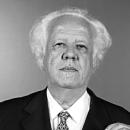
Building up from scratch, reporting from the trenches
MÁS EN ESTA SECCIÓN
It was in a war zone in North Philadelphia — once named the “Badlands” by a discouraged Philadelphia Police officer — where AL DÍA News Media started 23 years ago, enabled by a critical piece of early Apple technology. Originally a neighborhood newspaper, few know it was once just a home-based, one-man news operation with a gusto for the impossible. Gracias, Steve Jobs!
Mr. Walt Disney used to say: “It is kind of fun to do the impossible...”
He had that brave imagination that allowed him to picture Epcot Centers and Disneyworld while staring at nasty, alligator-infested swamps in Florida’s undeveloped land.
He also possessed the entrepreneurial spine for his masterful pencil to go from drawing Mickey Mouse on a napkin to drawing, and then physically building, a huge entertainment company that survives him today, 40 years after his death.
Everybody remembers his big accomplishments, the money, the fame and glory, but few know about the flip side, often made of personal agony:
The growing pains of the company, the numerous scuffles with bankers, lawyers, accountants, or the ocassional squabbles with employees, or the outright defeats and humiliations at the hands of competitors and adversaries in that rough arena called the marketplace. On top of that, the untold acts of humility and courage needed each time to get back on his feet the next day, no matter how bitter the blow, always with a humble attitude and a sunshine smile.
Babe Ruth is in the history books for the home runs he hit, not for the 10 more times he had to strike out to arrive at the record number.
Similarly, Thomas A. Edison is remembered for the one single successful electrical bulb, not for the 99 times he failed to invent the right one. Babe Ruth is in the history books for the home runs he hit, not for the 10 more times he had to strike out to arrive at the record number.
AL DÍA’s story in Philadelphia has followed a similar pattern on (of course) a vastly smaller scale.
We were a "media start-up", before the “start-up” term was even coined, and I just realized we were an “entrepreneurial journalism enterprise,” way before that term was institutionalized and made reputable by academic institutions teaching now the fashionable discipline in classrooms.
Our claim of legitimacy certainly doesn’t come from Wall Street investors, and much less from Spanish-language power media power houses from Madrid, Spain, or Buenos Aires, Argentina —now coming to NYC or Miami to supposedly enlighten the nascent U.S. Latino Media— but from the narrow trenches and alleys of urban America, where a strong cultural trunk is sustaining our natural and organic development.
We were sort of baptized by fire in the sometimes mean streets of urban Philadelphia, in our own bare-knuckled “Bowery,” — the upper boundaries of the local Latino Barrio, in North Philly — not exactly “Gangs of New York” territory, but close enough to keep my wife and I always watching over our shoulders while we raised two children there, and nurtured, at the same time, a small business in the living room of our own home, in the multiracial Olney neighborhood, where our family was actually attacked, not once by twice by ordinary burglars.
From that humble origin, not exactly that romanticized garage, but, in the absence of a garage, the second floor of a funeral parlor, I always say that AL DÍA has been powered above all by the same 3 elements driving innovation in America today: Technology, Technology and Technology.

From that humble origin, not exactly that romanticized garage, but, in the absence of a garage, the second floor of a funeral parlor (see picture), I always say that AL DÍA has been powered above all (beyond the claims of persistence, imagination and resilience we could make) by the same 3 elements driving innovation in America today:
Technology, Technology, and Tecnology.
It was the technology available at our inception, 23 years ago, more than our business acumen or journalistic vision, that got us dreaming of the impossible in such challenged urban enclave.
The same way the web browser and mobile devices empower young entrepreneurs today to believe in and aim at achieving the impossible —enabling those who persist with the opportunity to create something out of nothing — we were lucky to have handy one of the first versions of the Apple personal desktop computer, model 1989 or 90, way before laptops became fashionable (thank you, by the way, Mr. Steve Jobs, for getting us in business! :).
The model was known as the Apple MacIntosh SE personal computer (see picture of actual and original machine, now sitting as a museum piece in AL DIA's Publisher office, on 1835 Market Street, in downtown Philadelphia, where AL DÍA News Media is currently headquartered.)
I had bought this early Apple model with a student loan at my Journalism Graduate program at the University of Iowa, in Iowa City. It was year 1991, and the little machine, for which I remember I had paid $2,200 dollars, in installments of $150 or so a month, sat enticingly in the my living room of my home in North Philadelphia, sort of looking at me, with a now forgotten piece of software (the DeskTop Publishing “PageMaker 1.0.”) that powered up the desktop device— and also ordinary citizens (like yours truly) to dream of becoming publishers, in that 1990s decade when no one could predict the gradual implosion of the Philadelphia Daily News and other legacy newspapers' business model.

Technology, in particular the Apple technology we continue using 23 years later, now in the new form of laptops, tablets, or smartphones, got us underway.
I heard a global banker once saying: “People around the world longing for development in their communities always ask me for the same two things: Technology and Capital.” It is the same in China, India, Argentina, or here in the States, in California, Oklahoma or Pennsylvania, he said.
After 23 years in business, I can attest to this:
Technology, in particular the Apple technology we continue using 23 years later, now in the new form of laptops, tablets, or smartphones, got us underway in 1991.
Then, an a injection of capital (about $2,000 bucks) which, as an early miracle, came unexpectedly to our household via an IRS tax refund in 1992, enabled us to finance another required piece of required revolutionary technology:

A small laser printer, capable of outputting 8.5 by 11-inch sheets —enough to get the tabloid page of our original newspaper in only two passes — in addition to a photo scanner that did away with the tedious and long process of resizing, half-toning and patiently cutting with a knife each photo and illustration used in our early, hard-copy, paste-up page boards.
The third of piece of technology I was lucky to be able to build with my own hands, unskilled on the writer's keyboard, but even more so on the carpenter's tools.
Following the instructions in a book I read in the University of Iowa’s School of Journalism, during my years there pursuing a Master’s degree between 1988 and 1990 (specifically in the “101 DeskTop Publishing Class" taught by my, now deceased, dear professor Bill Zima), I remember buying at Home Depot the raw wood, the lights, the electrical wires, the switch, the nails and the hammer to piece together the first AL DÍA’s “Light Box”.
Like from a magical Crystal Ball each of the 16 pages of that first edition of AL DÍA, in the tabloid format North Philadelphia first ever saw, finally came out to life one by one, from that early AL DÍA's artisan “Light Box” we would mount every week in the kitchen cabinet of our 2nd-floor apartment in North Philly where we used to assemble it all.
If I remember correctly, it was around the months of May or June of 1992, very early in the day of this revolutionary transformation currently building heavy swell on the ocean of news media in America.






DEJE UN COMENTARIO:
¡Únete a la discusión! Deja un comentario.